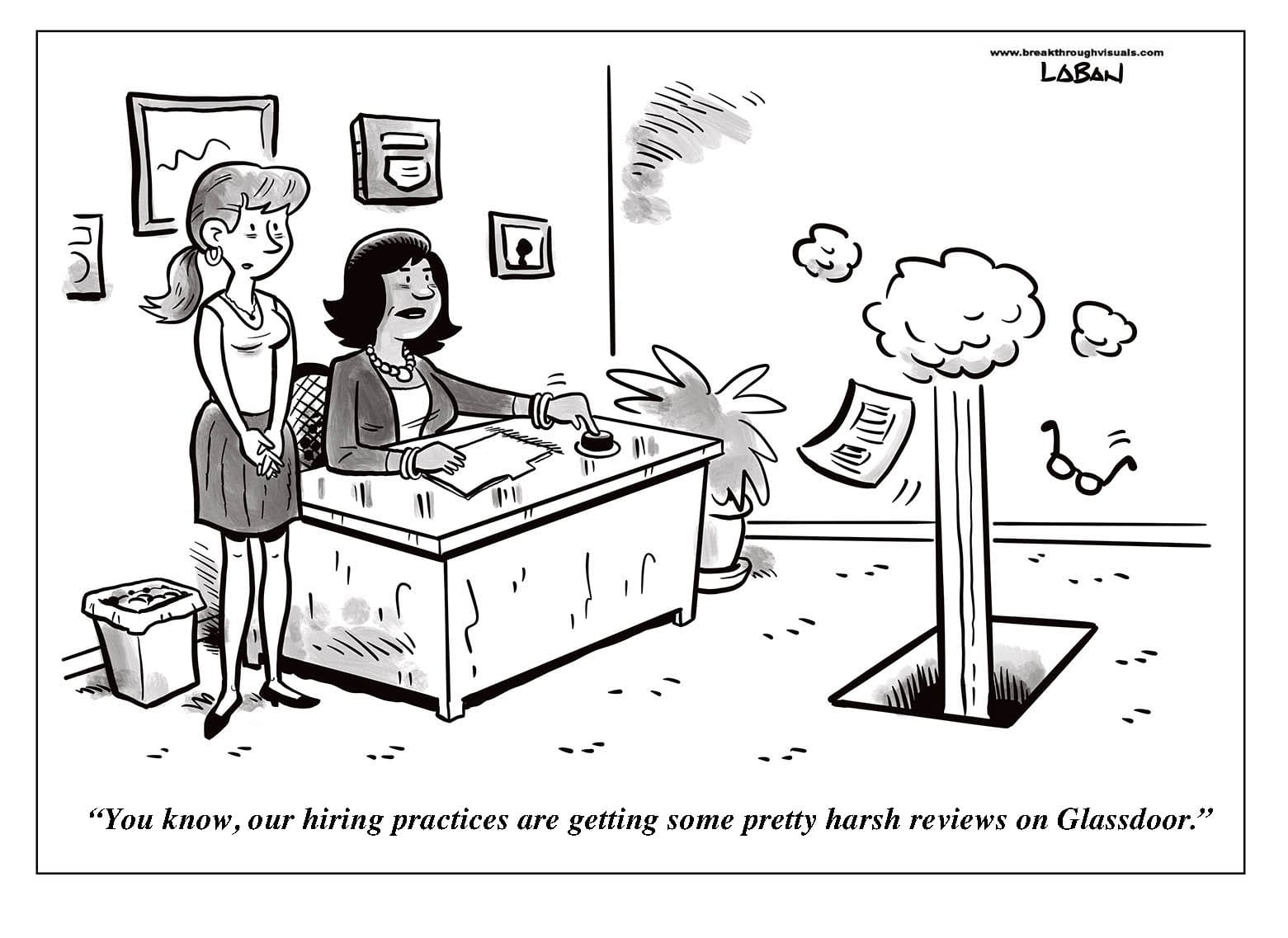Talent Acquisition vs Recruitment: Everything You Need To Know
Recruiting is a subset of Talent acquisition; where there's an immediate need to fill up a vacancy. Even though the terms are used interchangeably, there are some stark differences between these two terms.


The terms “talent acquisition” and “recruitment” are often confused and are thought to be different terms for the same process that can be used interchangeably. To some extent this is true, but there are some stark differences between these two terms. Simply understanding the key differences and similarities between the two processes can help you hire the most qualified talent and create a sustainable hiring process for your organization.
Talent Acquisition vs Recruitment: Everything You Need To Know
This article takes a deep dive into everything you need to know about talent acquisition vs. recruitment.
What's included:
- What is Talent Acquisition (TA)?
- What is Recruitment?
- Differences between Talent Acquisition and Recruitment
- When to use Recruitment
- When to use Talent Acquisition
- The key strategic elements of Talent Acquisition
- Build a winning Talent Acquisition team
What is Talent Acquisition?
Talent Acquisition is a proactive and a cyclical process that is geared towards building a positive employer brand, creating a feasible talent pool, and foreseeing future hiring needs. It is a strategic approach that not only seeks to fill current positions in an organization, but also the development of a strong talent pipeline that utilizes candidates and their skills for the fulfillment of future positions.
Talent Acquisition is a long-term human resource planning and is a continuous process.
Strategic talent acquisition also involves the awareness of current staffing trends, state of the present workforce as well as the future workforce, and using those insights to attract potential talent.
What is Recruitment?
Recruitment is a linear process that deals with hiring candidates to fill open positions within an organization quickly. When compared to talent acquisition which is more of a proactive and continuous process, the recruitment process is reactive and momentary. For organizations, it's essential to find the right person for the right job, and in order to do that, you must have a well-organized recruitment process.

Recruitment is only one of the subset of talent acquisition. The entire process can be further a broken into 5 activities:
- Candidate Sourcing
- Lead Nurturing
- Candidate Selection
- Interviewing
- Onboarding
Differences between Talent Acquisition and Recruitment
Although both approaches involve filling vacant positions of an organization, there are some key differences between recruitment and talent acquisition.
Long Term Vs Short Term
The easiest way to understand the differences between talent acquisition and recruitment is to view them as long-term planning and a short-term fix, respectively.
Recruitment is a prompt exercise, a need of the hour. For example, a recruiting professional has to create a series of challenges to screen candidates from the talent pool based on the key skills required for the job role and hire the best talent fit for the role. All these activities have to be completed within the shortest possible time.
Whereas strategic talent acquisition is a less hurried process that deals with the future talent needs of the organization.
Ongoing Process Vs Linear Process
Strategic talent acquisition is a continuous cycle that can take more time up-front and focuses on activities such as outreach, employment branding, networking, candidate engagement, and relationship building with talent communities. These activities in tandem build and enhance an efficient talent supply chain for any business.
On the other hand, recruitment is a linear process, where recruiters source and screen candidates for current vacancies. This often leads to an increase in recruitment metrics such as cost-to-hire and time-to-hire.
Dynamic Vs Static
Acquiring talent is largely about getting the cream of the crop for your business. Talent acquisition is dynamic and all about growth. The strategic approach becomes more fluid if new positions are created based on future talent needs or major changes are made to the existing ones.
The recruitment process is static, that is, it ends when somebody is successfully hired. It doesn’t change. There is no major effect that can felt across an organization because of recruitment as it involves filling up an empty position.
When to use Recruitment
The traditional recruitment process is all about filling current empty positions. When you choose to recruit for your business, you likely have a clear understanding of what the role requires and the key skills and knowledge required for the position. It is a great way to fill sudden and unexpected vacancies.
A recruitment process helps in raising some important questions:
- What are the skills required to perform the tasks for this job position?
- Does this particular position require experience?
- Is there talent available in the current workplace?
- What would a potential candidate look like for this job position?
- Can this candidate be fit to perform the job?
There is never a need to completely remove recruitment from the picture and just be focused on talent acquisition. But rather, talent acquisition and recruitment should be considered as two different processes with different goals.
When to use Talent Acquisition
Strategic talent acquisition is a cyclical approach to finding potential candidates for your business who will be motivated and engaged to build a positive company culture. It is geared towards developing and nurturing a talent pipeline with a long-term view.
You should consider engaging in talent acquisition for the following situations:
- For finding niche talent: A good talent acquisition strategy is helpful when it operates in a niche market and requires individuals with skill sets that are difficult to come across. This includes jobs in technology industries such as cybersecurity, cloud infrastructure, AI, and Virtual Reality.
- When you are looking to expand: Businesses looking to grow can benefit from having a talent acquisition strategy in place. It helps employers to look for fresh skill sets and higher levels of expertise.
- If you are a newcomer: If you are just breaking out in your niche sector, it is difficult to find the best talent, if candidates are not aware about your company. In such a case positive employer branding becomes an important part of your talent acquisition strategy.
- If you are not sure what you need: Investing in a talent acquisition strategy is the right option when you are not sure about the day-to-day tasks the job title will require.
The key strategic elements of Talent Acquisition
Certainly, strategic talent acquisition includes recruitment, but it also includes these 6 key elements:
- Planning and strategy: Planning and strategizing by inspecting your future workforce needs as well as your business needs can help you develop a solid talent acquisition strategy.
- Workforce segmentation: Strategic TA hugely depends on clearly understanding the different work segments within an organization, as well as the hierarchy within each segment. This also includes having a good understanding of the various competencies and skills required for each role in an organization.
- Employment branding: Great employer branding practices help organizations attract consumers as well as the top talent from the candidate pool. This involves activities such as fostering a positive workplace culture, a great candidate relationship, and a good reputation based on products and services.
- Talent management: Fostering positive candidate experiences, managing candidate communities, and using innovative sourcing strategies can help organizations with talent scoping and management.
- Metrics and analytics: Talent acquisition strategy is incomplete without continuously tracking the key metrics and their subsequent analysis to take better recruitment decisions. Areas where analytics matters includes Recruitment metrics, Employee profiles and employee movement, Demographic data and succession planning, Data related to performance management, and Employee suggestions implemented and their impact, to name a few.
Building a winning Talent Acquisition team
To establish a Talent Acquisition strategy across an organization, you need to build a winning team. Your company's Talent Acquisition (TA) team should align their goals based on your company’s size and future workforce needs. Members of the team should be familiar with hiring practices, innovative tools of recruitment, and also have excellent networking skills to build relationships with potential talents online and offline.
Your TA team could include:
- Talent Acquisition Managers / Recruiting Managers
- Talent Acquisition / Recruiting Specialists (senior and junior)
- Recruiting Coordinators
- Recruiting Consultants
- Recruiting Analysts / Talent Acquisition Analysts
- Sourcers
Wrapping up
Recruitment has always been a part of talent acquisition. Setting up an entire Talent acquisition strategy takes more time up-front, but in the end, it helps organizations build the best possible team. Irrespective of the path you choose the key is to upgrade your knowledge on the trends and technologies available and utilize them efficiently to deliver success.

